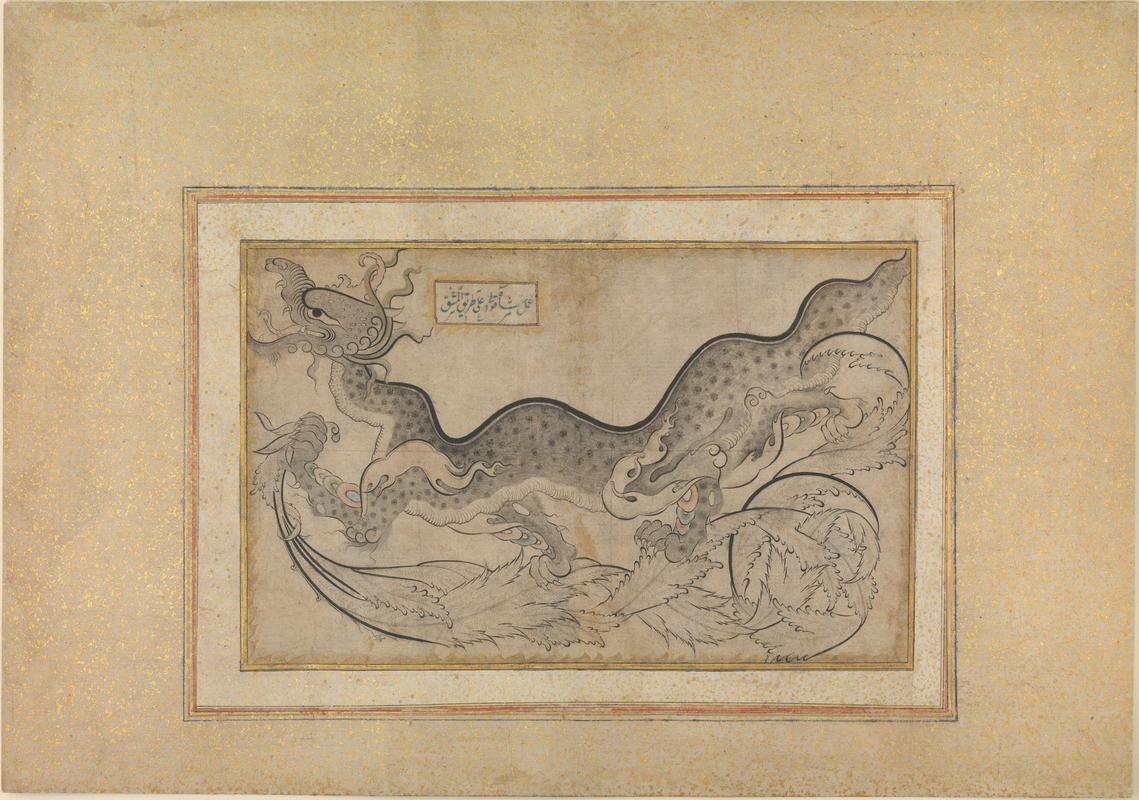More about 'Saz'-Style Drawing of a Dragon Amid Foliage

Contributor
The Ottoman Empire was at its height in the 1550s.
From Asia Minor to the Persian highlands, their grasp encompassed much of the Islamic world. Plants and animals were used extensively throughout Ottoman architecture and art, keeping with the tradition of avoiding human figures to prevent idolatry. The “saz” style, named for the reed pen (saz qalami) with which these works were created, was characterized by enormous flowers, curving leaves, and depictions of mythological creatures, and was made popular by Shah Quli. Chinese influence has made a huge impact in Persia, and by 1410 it had carried its influence all the way over to the Ottoman court. The dragon in the leaves wouldn’t look out of place in a Song Dynasty landscape piece, and it stands as a testament to the globalizing effects the Silk Road had on the Eurasian continent.
The only mention of any dragon in native Persian mythology is of a creature called the “azdaha,” an enormous serpent the size of a mountain, equipped with large tusks, and an appetite to match. It also speaks. Think Smaug, but it looks more like Randall from "Monsters, Inc." on steroids. Zoroastrianism, the main religion of the Persians, considered any and all large monsters to be unnatural to the world and a product of Ahriman, the god of evil and chaos. Naturally, this meant the dragon was slain by a hero, as the Avesta (the Zorastrian holy text) depicts.
Cora Timken Burnett, the last owner of the drawing before it was given to the Met, was born on Dec. 1, 1871. She was born into money: the Timkens were multimillionaires thanks in part to their stake in the roller-bearing business. In the early 1920s she married Dr. Jacob Burnett, bone doctor and scientist. The couple built a sprawling estate close to the Palisades, a range of cliffs overlooking the Hudson River in New Jersey. She was known for having one of the largest collections of Eastern art on the East Coast and fought a very extensive legal battle over the construction of the Palisades Interstate Parkway, which would pass through the property they called home. She died in 1956, unfortunately losing the estate three years later. Portions of it still remain off the course of the highway.
Sources
- “Cora Timken Burnett (1871-1956) - Find A Grave...” Find A Grave. Accessed September 1, 2019. https://www.findagrave.com/memorial/102052955/cora-burnett.
- Denny, Walter B. "Dating Ottoman Turkish Works in the Saz Style." Muqarnas: An Annual on Islamic Art and Architecture I (1983): 103-122.
- Skjærvø, P. O., Dj. Khaleghi-Motlagh, and J. R. Russell. “AŽDAHĀ.” Encyclopædia Iranica. Encyclopædia Iranica Foundation, August 18, 2011. http://www.iranicaonline.org/articles/azdaha-dragon-various-kinds#pt2.
- “Stranger than Weird.” Stranger Than Weird | Palisades Interstate Park in New Jersey. Palisades Interstate Park Commission. Accessed September 1, 2019. https://www.njpalisades.org/strangerThanWeird.html.
- islamic-arts.org Team. “Style in Islamic Art - 1500-1700 A.D. « Islamic Arts and Architecture.” Islamic Arts and Architecture. Islamic Arts and Architecture, March 15, 2011. http://islamic-arts.org/2011/style-in-islamic-art-1500-1700-a-d/.











